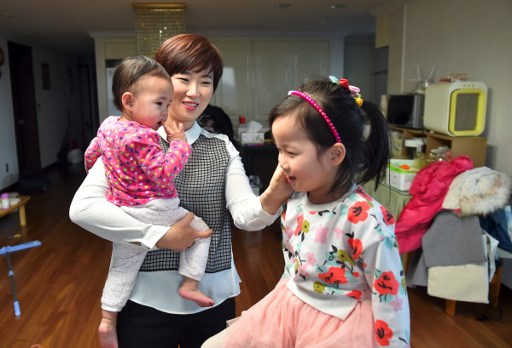
SEOUL, South Korea (AFP) — South Korea issued a raft of measures Friday to try to reverse one of the world’s lowest birth rates, offering potential parents increased benefits as it faces a looming population decline.
The country’s fertility rate — the number of children a woman is expected to have in her lifetime — fell to 0.95 in the third quarter, the first time it has dropped below 1 and far short of the 2.1 needed to maintain stability.
As a result the population of the world’s 11th largest economy, currently 51 million, is expected to start falling in 2028.
There are multiple causes, including the expense of child-rearing, long working hours, limited daycare, and career setbacks for working mothers, who bear a double burden of carrying out the brunt of household chores.
The government has spent a whopping 136 trillion won ($121 billion) since 2005 to try to boost the birth rate, without success.
In its latest attempt to reverse the decline, Seoul said Friday it would expand child subsidies — of up to 300,000 won ($270) a month — to the richest 10 percent of families, who are currently excluded.
From late next year, parents with children younger than eight will be able to work one hour less each day to take care of their offspring, while paid paternity leave entitlements will rise from three days to 10.
But only 13 percent of South Korean men take up the entitlement, with many more fearing that doing so would raise questions about their commitment to their employers.
The ministry also said it would build more daycare centres and kindergartens with the goal of enabling 40 percent of children to use them.
“This package is to focus on giving hope to people aged in their 20s to their 40s and to make certain that their quality of life does not deteriorate when opting for marriage and childbirth,” said Kim Sang-hee, vice chairwoman of a presidential taskforce to tackle the low birth rate.
© Agence France-Presse








